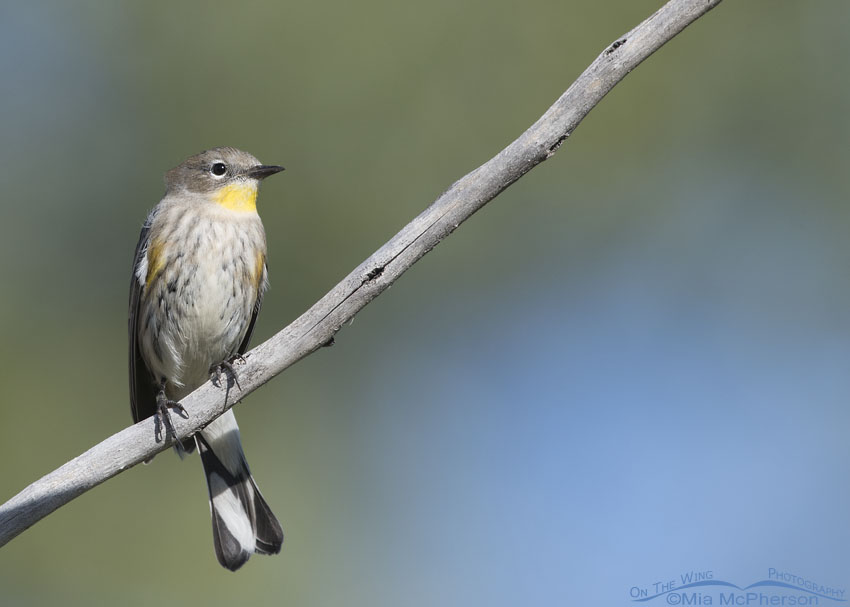 Yellow-rumped Warbler perched over a pond – Nikon D500, f7.1, 1/800, ISO 400, Nikkor 500mm VR with 1.4x TC, natural light
Yellow-rumped Warbler perched over a pond – Nikon D500, f7.1, 1/800, ISO 400, Nikkor 500mm VR with 1.4x TC, natural light
Yellow-rumped Warblers are one of the most abundant and widespread warbler species in North America. There are differences in appearance between those found in the east (Myrtle) and western (Audubon’s) North America. At one time they were considered two different species and they may be split again in the future.
Yesterday I spent an hour and a half photographing them at a nearby city park as they hawked and sallied for insects over and around the pond in the park. They would rest briefly in the trees between foraging flights and that was when I had the best opportunities to photograph them.
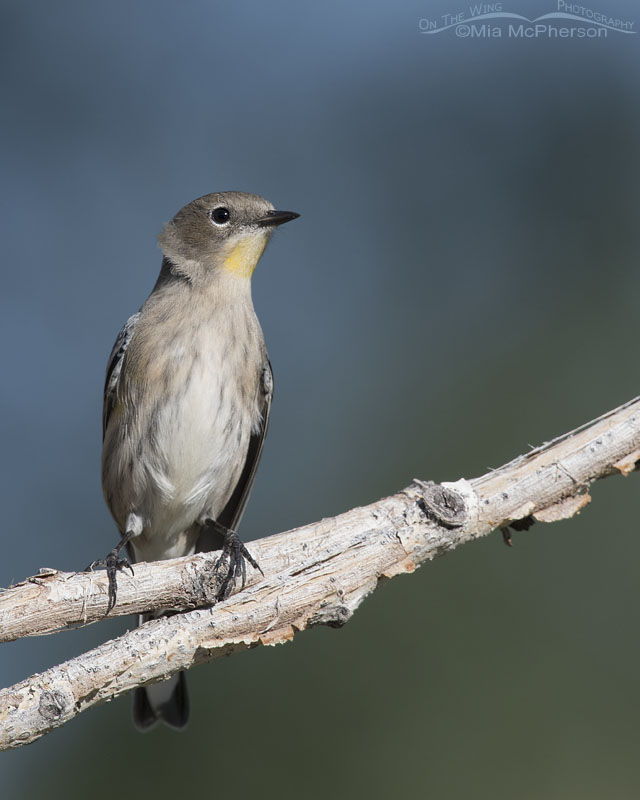 Alert Yellow-rumped Warbler – Nikon D500, f7.1, 1/800, ISO 400, Nikkor 500mm VR with 1.4x TC, natural light
Alert Yellow-rumped Warbler – Nikon D500, f7.1, 1/800, ISO 400, Nikkor 500mm VR with 1.4x TC, natural light
It was hard to tell how many of the Yellow-rumped Warblers there were in the area but I took advantage of their high numbers to produce some nice photos. The Yellow-rumped Warblers are seen in high numbers here in northern Utah during spring and fall migration, these birds are migrating south now.
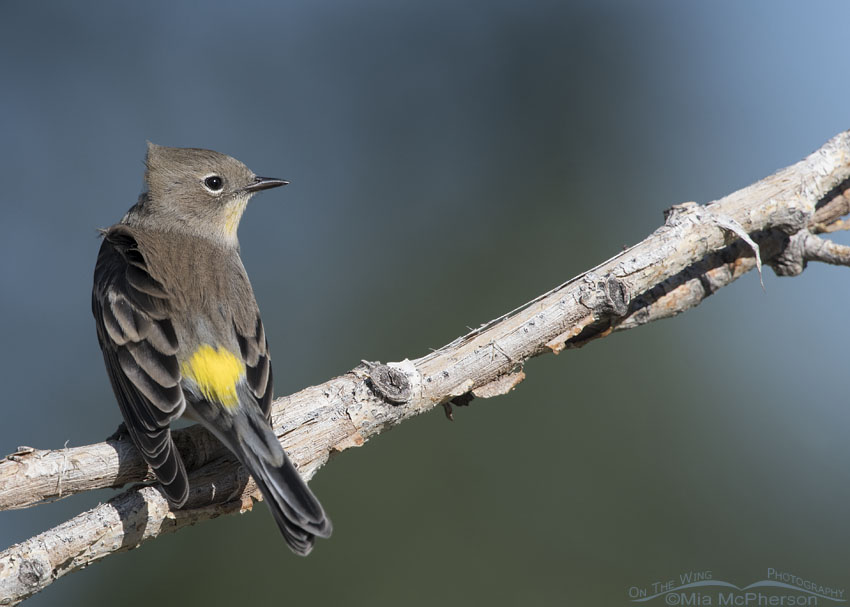 Wind-blown Yellow-rumped Warbler – Nikon D500, f7.1, 1/800, ISO 400, Nikkor 500mm VR with 1.4x TC, natural light
Wind-blown Yellow-rumped Warbler – Nikon D500, f7.1, 1/800, ISO 400, Nikkor 500mm VR with 1.4x TC, natural light
Some Yellow-rumped Warblers may even overwinter at the extreme southwestern part of Utah but the majority migrate further south.
Yellow-rumped Warblers can easily switch their diet from the insects they consume during the breeding season to berries in the fall.
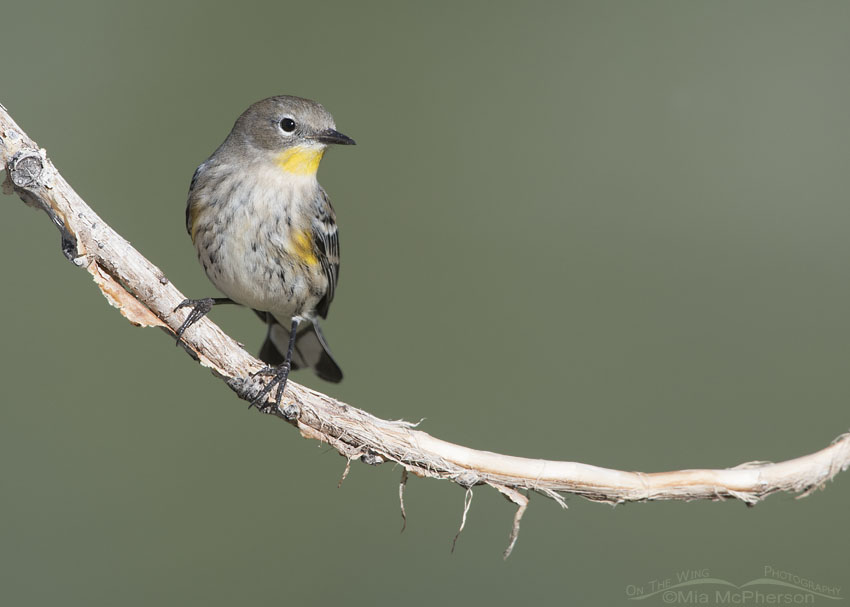 Yellow-rumped Warbler on a curved branch – Nikon D500, f7.1, 1/800, ISO 400, Nikkor 500mm VR with 1.4x TC, natural light
Yellow-rumped Warbler on a curved branch – Nikon D500, f7.1, 1/800, ISO 400, Nikkor 500mm VR with 1.4x TC, natural light
The yellow-rumps I photographed yesterday were interesting to watch as they foraged for insects and I noticed the birds that captured food would come back to the tree, eat their prey and that they rested on the branches longer than the birds that hadn’t captured prey.
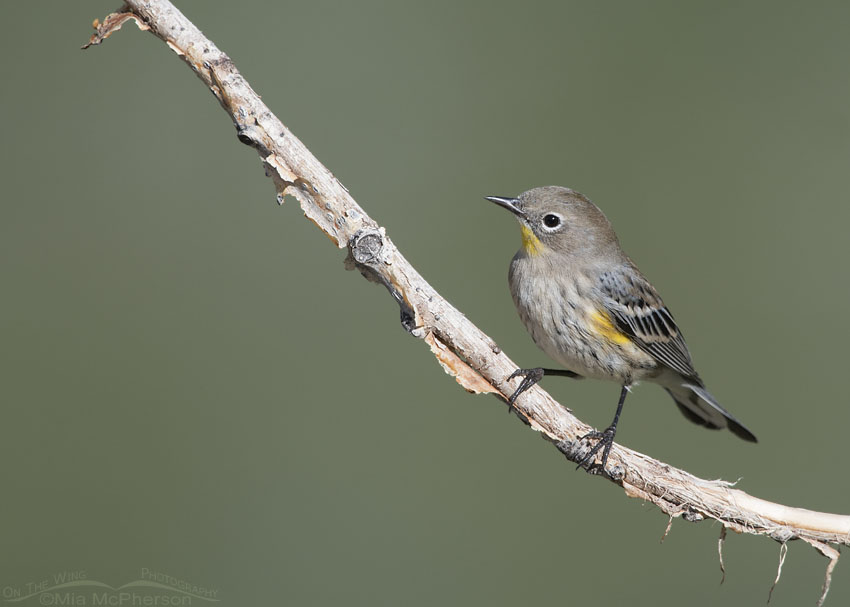 Yellow-rumped Warbler on fall migration – Nikon D500, f7.1, 1/800, ISO 400, Nikkor 500mm VR with 1.4x TC, natural light
Yellow-rumped Warbler on fall migration – Nikon D500, f7.1, 1/800, ISO 400, Nikkor 500mm VR with 1.4x TC, natural light
It was frustrating that when the Yellow-rumped Warblers flew into the tree that most of the time I had branches obscuring my view of the birds and that it was difficult to find these warblers out in plain view.
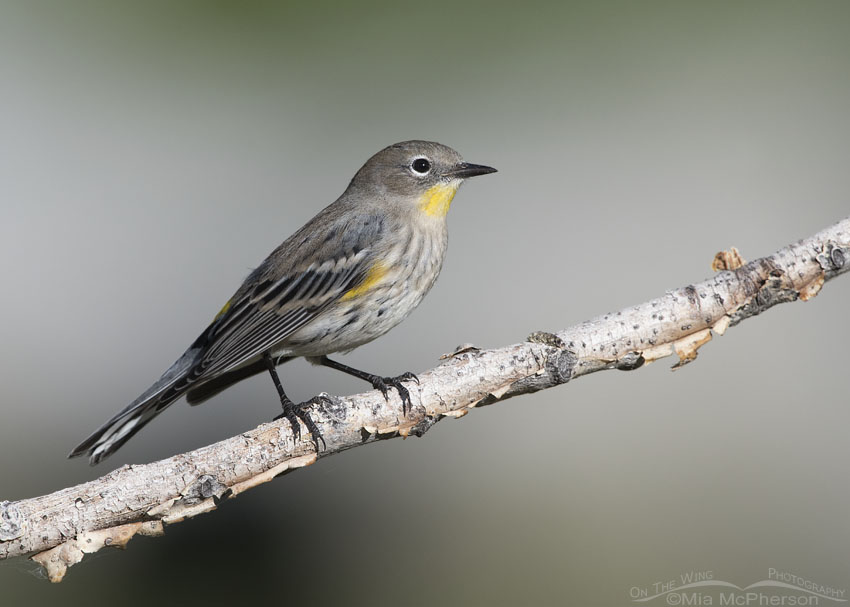 Migrating Yellow-rumped Warbler – Nikon D500, f7.1, 1/1600, ISO 400, Nikkor 500mm VR with 1.4x TC, natural light
Migrating Yellow-rumped Warbler – Nikon D500, f7.1, 1/1600, ISO 400, Nikkor 500mm VR with 1.4x TC, natural light
In the hour and a half I spent with the Yellow-rumped Warblers I only had a few opportunities with them where there weren’t branches in front of them and where the background was clear of them too.
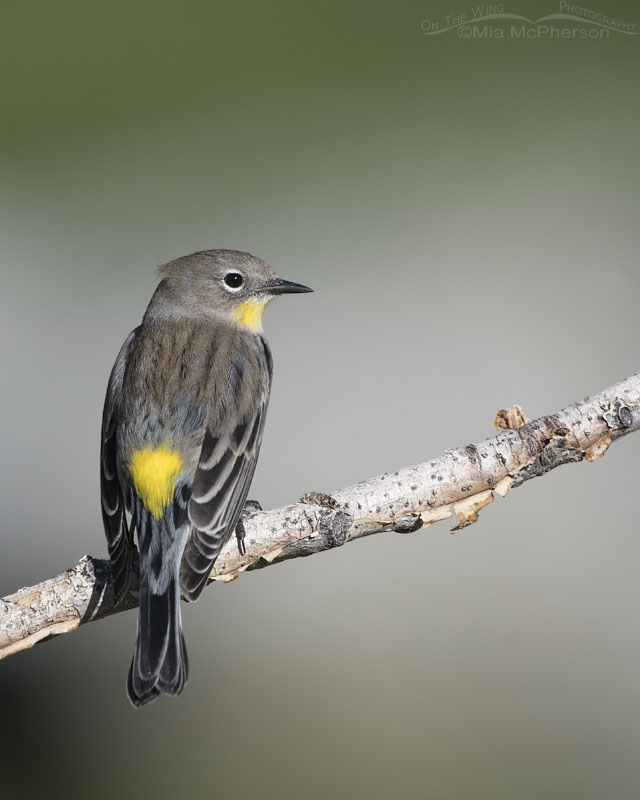 Yellow-rumped Warbler back view – Nikon D500, f7.1, 1/1600, ISO 400, Nikkor 500mm VR with 1.4x TC, natural light
Yellow-rumped Warbler back view – Nikon D500, f7.1, 1/1600, ISO 400, Nikkor 500mm VR with 1.4x TC, natural light
This photo in particular shows the yellow rump of the bird well and I thought I’d include it to show how they got their common name and the nickname “butter butt”.
I’m so glad I have the chance to photograph these Yellow-rumped Warblers close to home when they are migrating through the area.
Life is good.
Mia
Click here to see more of my Yellow-rumped Warbler photos plus facts and information about this species.





For me, it is always the composition, detail, color and clarity of your images that I find so compelling. This warbler series is a case in point. Every one of these pics is a stand alone portrait of a beautiful bird in a beautiful habitat. Gentle, even delicate, and at the same time…very powerful. Wonderful work Mia.
I love this series…especially the last one of these butter butts,,,they onviously fly too close th the sun and get a large blop of sunshine on their cute behinds….
Beautiful things. As always, thank you.
Beautiful captures!
Such spectacular beauty!